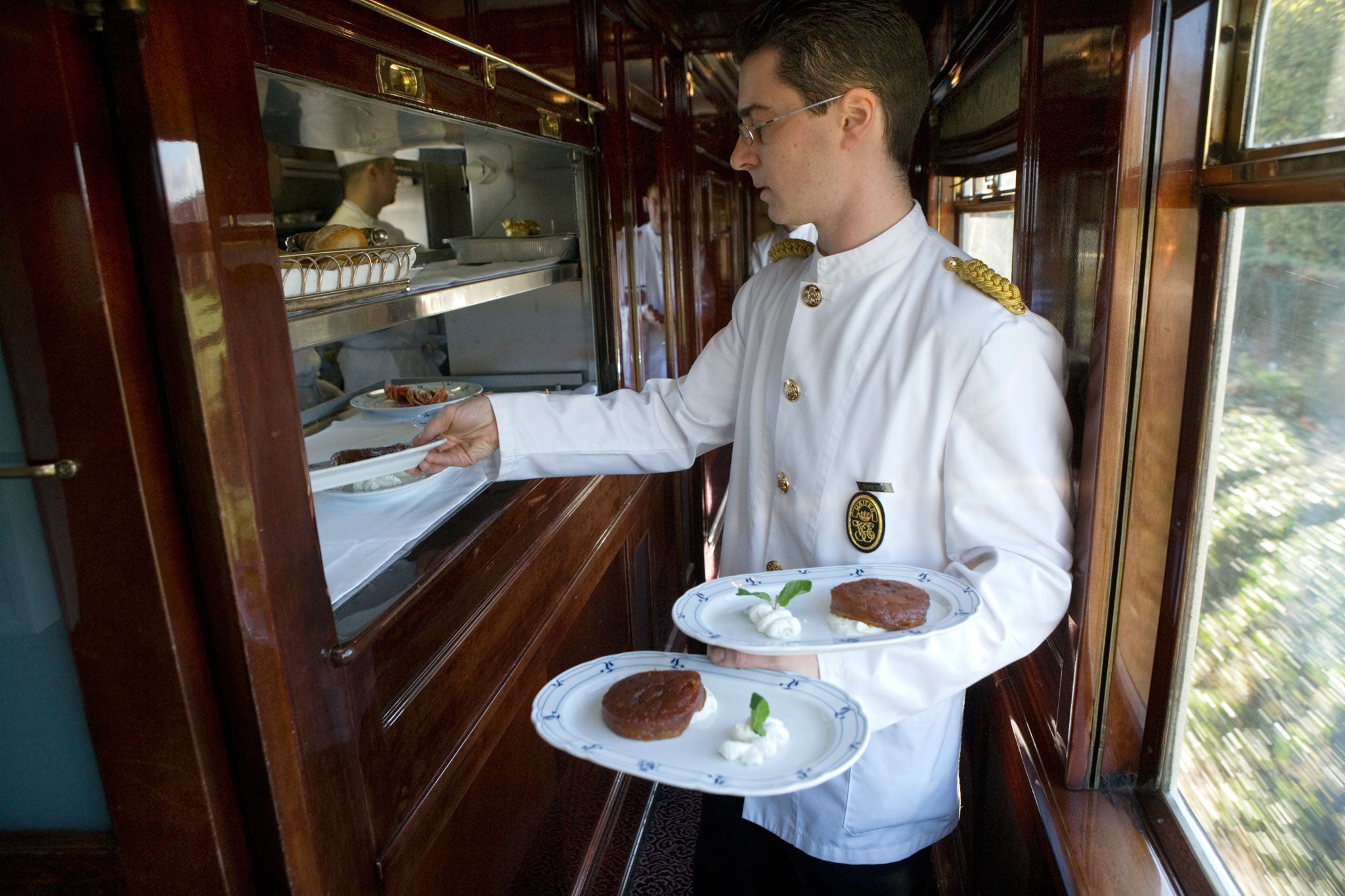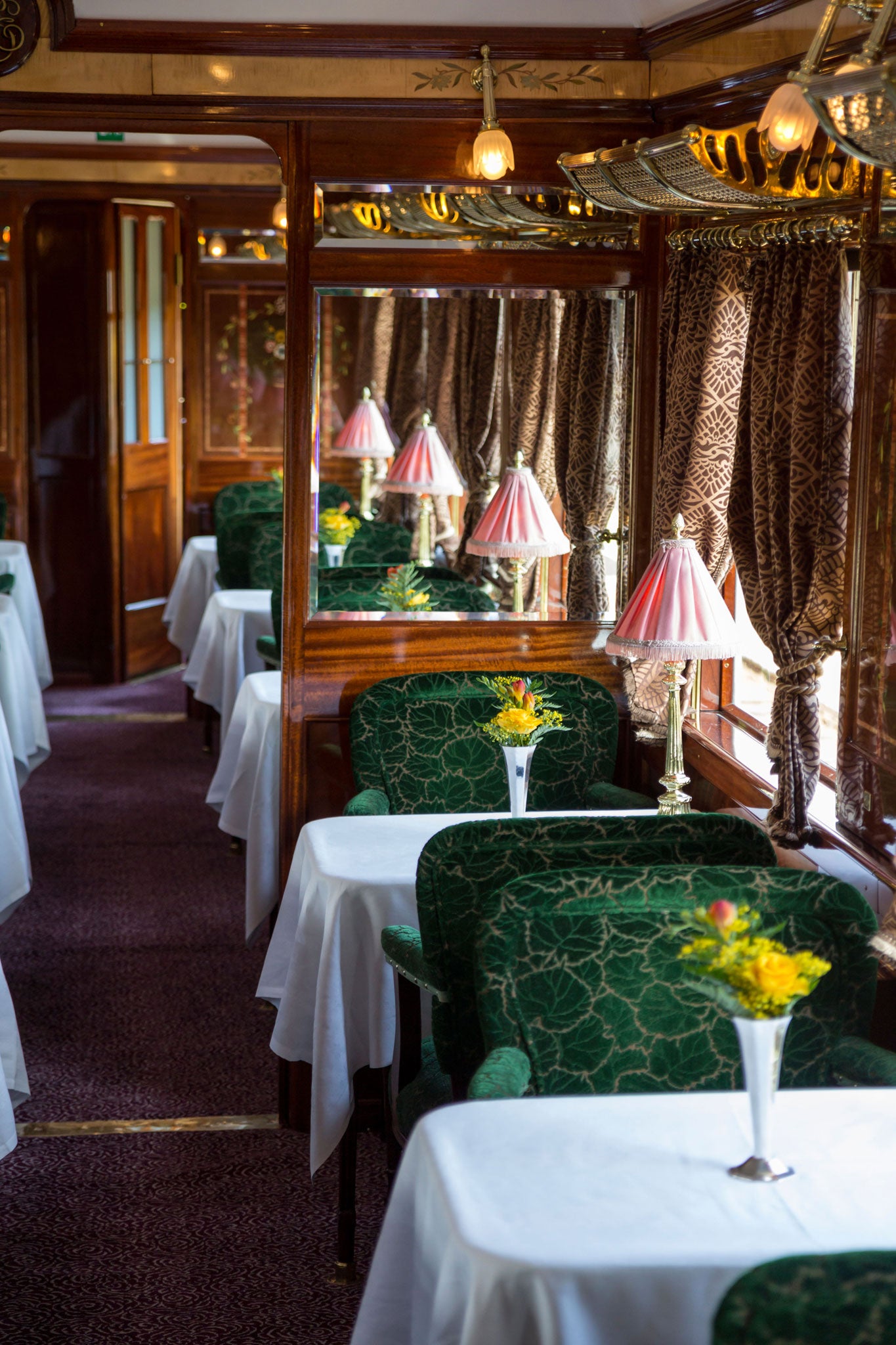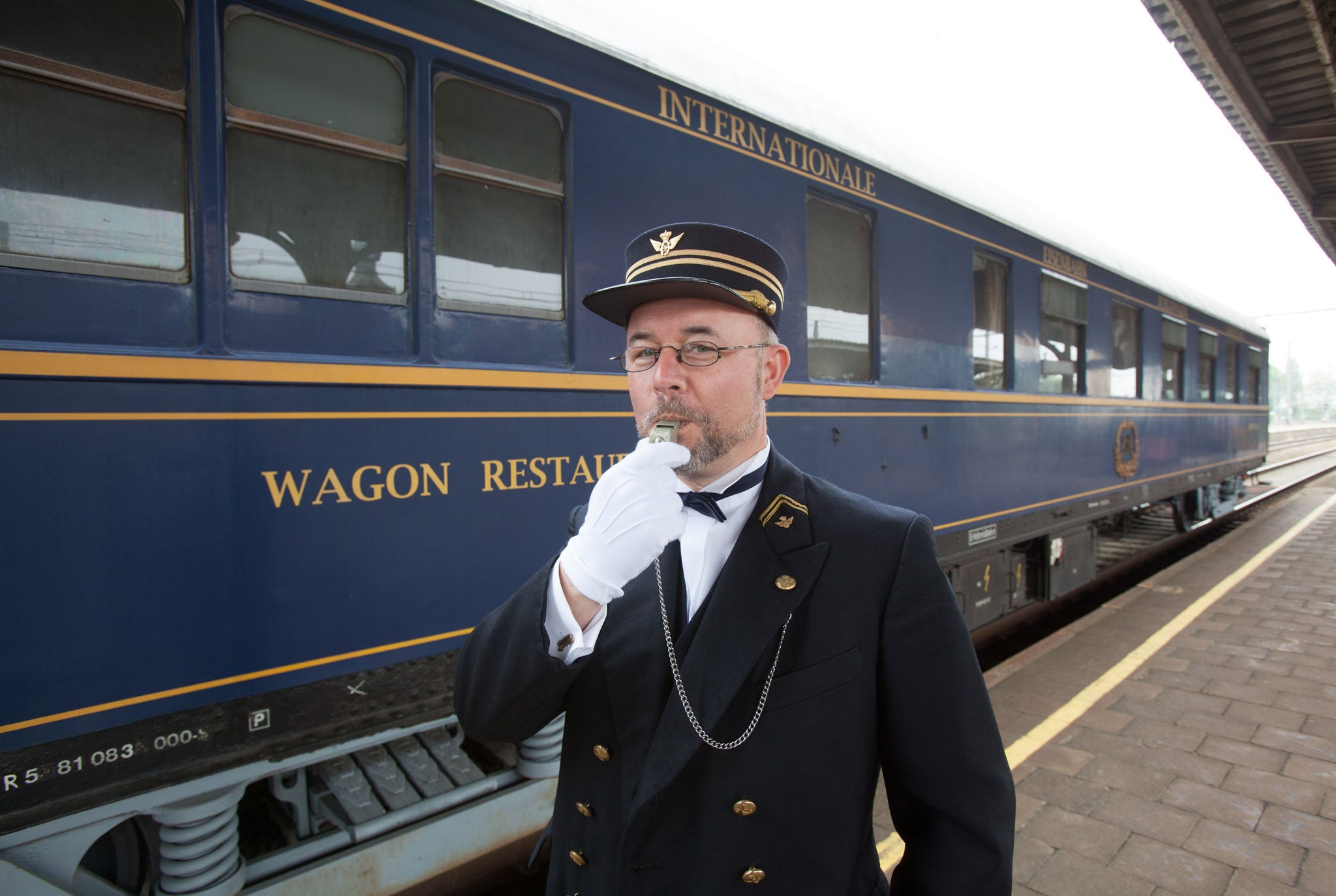Travel special 2014: Recalling murderous fun on the Orient Express

Ah, the Orient Express! What images she conjures in our minds... The gorgeous old carriages, brown-and-cream in their English incarnation, blue-and-gold for the trans-European hurtle to Venice, the train on which Hercules Poirot solves the most, shall we say, all-inclusive murder plot in all Agatha Christie's books, the setting for Graham Greene's sinister Mitteleuropean wheeler-dealers in Stamboul Train, the carriages in which James Bond wrestles to the death with his Soviet nemesis in From Russia with Love, the enduring dream of interwar, travel-bound intrigue, where romantic British chaps could find mysterious women in torn veils rapping on their couchette door at midnight, and find heftily-moustached Turkish spies passing them secret documents in the dining car...
Except that, unfortunately, none of these heady scenarios has anything to do with the real Orient Express. An accretion of stories and myths have grown up around the world's most famous train in a way they never hung around the Trans-Siberian Express, the Khyber Pass Local or the Golden Arrow of Kuala.
What we think of as the 'Orient Express' is about as authentic as Brigadoon. But its resplendent fakery didn't stop me from signing up to ride on it 30 years ago, or finding it one of the best travel experiences of my life.
The actual train – it wasn't a single train but a service of several trains – started 140 years ago, when a Belgian civil engineer named Georges Nagelmackers, having discovered grande-luxe Pullman train carriages while travelling in America, founded the Compagnie Internationale des Wagons-Lits (prosaically, the International Sleeping-Car Company) in 1874 and started the fashion for trains with slumber facilities and posh dining cars.
His first 'Train Éclair de Luxe' left Paris for Vienna on 10 October 1882, offering passengers four sleeping coaches and a sumptuous dinner that started with oysters and pasta soup, worked through turbot, chicken, beef and game, and finished with chocolate pudding. A year later, in June 1883, the first Express d'Orient left Paris for Vienna, with connections onward to Istanbul. By June 1889, you could travel direct from Paris to Istanbul.
Wars, Balkan disputes, international treaties and diplomatic shenanigans put luxury train rides on hold for years, but – with the opening of the Simplon Tunnel under the Alps, linking Switzerland to Italy – by the 1920s, the Orient Express had become a byword in comfort and luxury, the transit au choix of European royals, diplomats, businessmen, con men, gamblers and chancers.
But Murder on the Orient Express wasn't set on the original train but on the Simplon Orient Express, which started life in 1919 and went from Calais to Istanbul. Greene's Stamboul Train is set on something called the Oostende-Vienna Orient Express. The Second World War and the fall of the Iron Curtain put paid to the luxury services and by the 1960s the Orient Express had been dispersed into several minor services not worthy of the grand old name. The original train mutated into the Austrian Railways EuroNight Train, and ran between various destinations until 12 December 2009. From 1971, the Wagons-Lits Company didn't own or run the train any longer, they just supplied the catering, the linen and the uniforms. In 1977, they withdrew from the Orient Express completely.
Enter James Sherwood, a Kentucky entrepreneur who owned the Sea Containers company. At auction he bought two of the original train carriages – and over the next five years he bought 35 more, spending $16m. He found elderly British sleeping cars from the 1920s and 1930s, and Pullman cars from the 1950s. He kitted out the English Pullmans in cosy brown-and-cream livery, and restored the interiors; for the European journey he tarted up old Compagnie des Wagons-Lits cars in shiny midnight blue. And on 25 May, 1982, Sherwood's Orient Express made its first trip from London to Venice, 100 years after M Nagelmackers had started the whole thing.

Of course it was a luxurious fake, a mock-up, a fairground forgery of an original that hadn't been half as stylish. But in the early 1980s, the travel-trade world and the public collectively agreed to pretend this super-luxurious train was the old Orient Express of historical record. Passengers flocked to ride on the new/old Venice-Simplon, take in the art deco furnishings, the Lalique lamps, the handsome marquetry and layers of varnish on the wood panelling, to adopt fancy dress for dinner and tell their friends that it was an experience from a different era.
I seized an early chance to score a double cabin. Noting that many couples economised by taking the Orient Express one-way to Venice and flying home cheaply, I applied for a one-way berth on the return journey. A few were available in summer 1983. My girlfriend Carolyn and I flew to Venice, booked into a hotel by the Accademia, spent a fortnight strolling along the canals, visiting the glassworks at Murano and the Etruscan church in Torcello – and tucked away in our minds was the knowledge that the home trip would be a 24-hour immersion in luxury.
We boarded the train at 4.25pm and walked through the cars in a daze. Each dining table featured an old-fashioned lamp with a silk Edwardian shade. The ceiling cornices resembled the frames of belle époque paintings. Our cabin was amazingly cute, with its shagpile carpet and the rounded wooden doors. We sat on the grey upholstered sofa, bewildered by all this bounty.
A steward looked in. I said, "I can't work out where we're supposed to sleep. Is it along the corridor?" The steward regarded me kindly. "Ouile you are 'aving your dinay," he said, "we weel transforme zis space for zer sleeping. I sink you will like..."
Carolyn went to find the Ladies, located at the end of the corridor. "It's enormous," she said. "About the size of my whole flat, with fabulous brass taps and thick towels. But, you know what? There's no shower."
"Did you expect to find a shower in the bathroom on a train?" I asked.
"This isn't an ordinary train," she said. "This is a sleeping car on the Orient Express."
"You're forgetting," I said, "they'd never have had showers in the Twenties and Thirties, would they? It just shows how authentic it all is." You see how easily one believes a myth?
We gazed out the window as the train sang along to Verona. Later, as the August evening was turning to gold, and the Alps loomed in the distance, the train pulled into Innsbruck. There was shouting on the platform and I went to see. A baby grand piano was being winched into the bar car, like an infant pachyderm. Thirty minutes later we were off again. A beaming pianist played "Tea for Two" while the patrons of the bar car clinked Negronis and White Ladys.

The dinner on board the Orient Express has stayed in my head for 30 years for a reason: it was like dining on a film set, only with real food. Carolyn was mildly annoyed to find that she hadn't been the only one to pack an ostrich feather to wear in a bandeau around her head. But it was hard not to be impressed by the commitment of the diners: the vintage frocks by Fortuny and Schiaparelli, the acres of rhinestones and ropes of emeralds, the gentlemen's white dicky-bows and cummerbunds...
There was foie gras, and rillettes of duck and carpaccio of tuna, followed by best end of lamb with a herby crust, pheasant breast with prunes, chocolate fondant, tarte tatin. It was heaven, with about equal presences of French, Italian and British cuisine tactfully offered together.
After coffee, I smoked a post-prandial Embassy, flourishing an extendable cigarette-holder (yeah I know – but showing off was mandatory) and we chatted to our neighbours, a retired publican from South Shields and his wife, a vision in Monsoon chiffon. After brandies we found our cabin. It had indeed been transformed, into the most glamorous bunk-bedroom imaginable, with damask sheets, goose-down pillows and a ladder, clothed in tapestry, that led to the top bunk...
The London-to-Venice journey promises that when you wake and raise the blind, you'll find yourself alongside a Swiss lake, before whizzing through the Simplon Tunnel into Italy. No such drama plucked our hearts on the reverse trip – only the sight of vast French meadows and lanes of cypresses, as we sat in the dining car reflecting on the night before, and the uniformed flunkeys brought us croissants and café au lait. By lunchtime, we were in Calais, de-training in the heat, to catch the ferry with ordinary mortals.
The Venice-Simplon Orient Express still operates today, but now a one-way ticket costs £1,990. You don't take it to watch the view of Europe unfolding outside the window. You take it to enjoy the shared belief that this train once represented the high-point of 20th-century good living and sensuality: a combination of high style, flirtation, haute cuisine, vintage brandy, cabaret music, intrigue and sex in Arabic cotton sheets, while thundering along at 100 miles an hour, heading ecstatically into the night.
Join our commenting forum
Join thought-provoking conversations, follow other Independent readers and see their replies
Comments
Bookmark popover
Removed from bookmarks